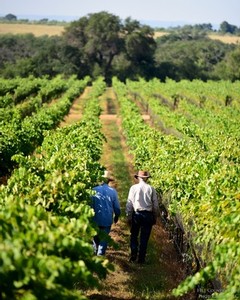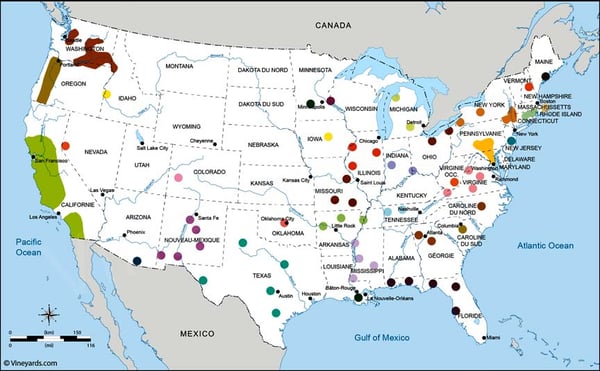What is an AVA and Why Does it Matter?
July 15, 2019
How can a wine drinker be assured that the wine they’re purchasing is a) the grape varietal(s) they want, b) from the place they want it, and c) at a quality level they’re comfortable with? In France, that’s fairly simple thanks in large part to their Appellation d’Origine Contrôlée (AOC) system. The French AOC system has very strict laws about putting the name of a grape growing region on a wine label that regulates things like what grape varietals can be grown in that region, the farming practices allowed, and the quality level of the wine. So when a French wine drinker buys a bottle at the store or a restaurant, they can see an AOC region name like Sancerre on a wine label, and immediately be assured of certain aspects of what’s inside that bottle.
Map of the United States' designated viticulture areas.
AOC is to French Wine as AVA is to American Wine
But that’s in France. And we are definitely not in France. In the U.S., we have the American Viticulture Area (AVA) system. An AVA is a legally-defined grape growing region in the United States. Unlike in France, AVA laws do not regulate specific varietals, farming practices, or quality levels -- it’s strictly a geographic boundary. In order to put the name of an AVA on a wine label (like Texas Hill Country AVA), a minimum of 85% of the wine must come from grapes grown within the AVA boundary.

And that’s it. So though, when it was created in 1980, the AVA system was designed to help wine drinkers be assured of what they are purchasing, it only communicates the region from which the grapes were sourced.
Registered AVas
As of December 2018, there were 242 legally registered AVAs in the country. In Texas, we have two main AVAs: the Texas High Plains AVA and the Texas Hill Country AVA, which account for 95% of grapes grown for wine in the state.
If you don’t remember anything else:
- AVA stands for American Viticulture Area, a legally-defined grape growing region in the U.S.
- Wines produced from grapes grown in an AVA can be labeled with the name of the AVA if at least 85% of the wine comes from grapes grown within the AVA boundary.
- AVA regulations help wine drinkers understand where the grapes in their wine were grown, but due to less-than-strict regulations about types of grapes, winemaking, and quality, is limited in its ability to communicate much else.

